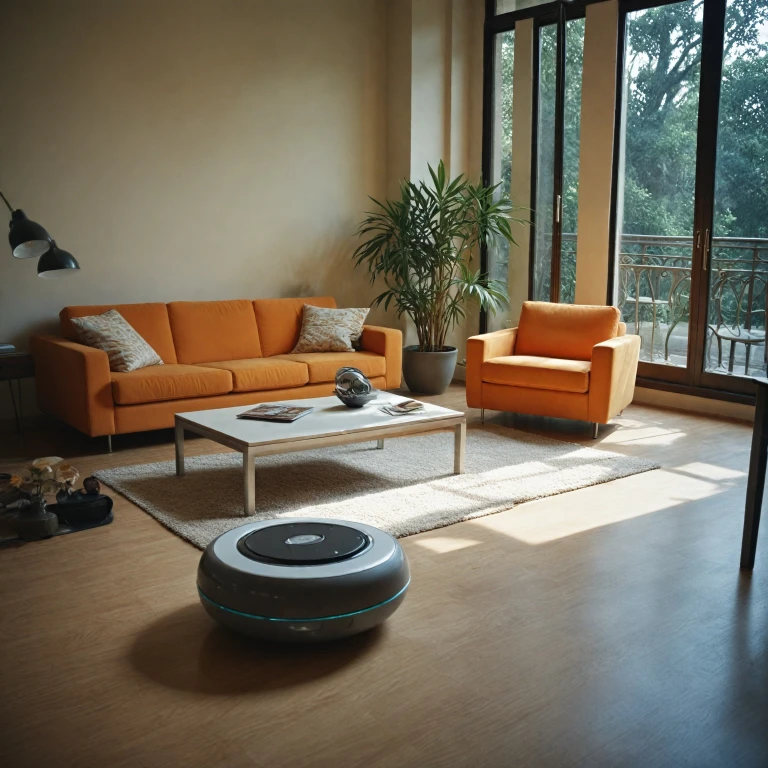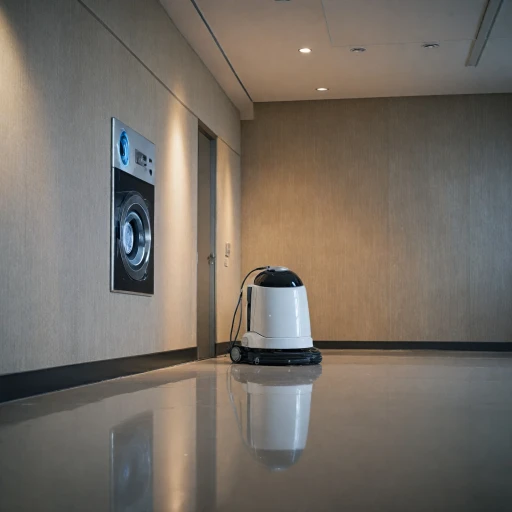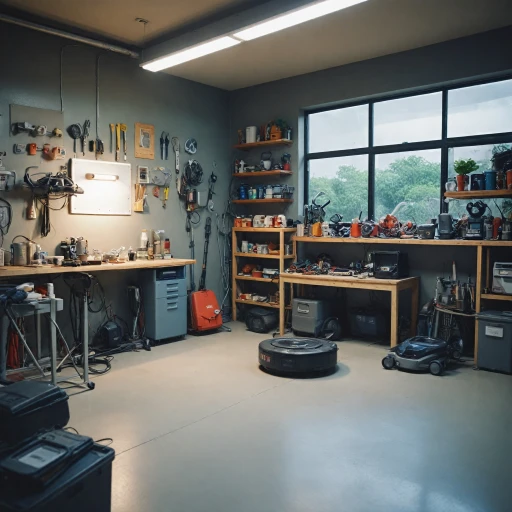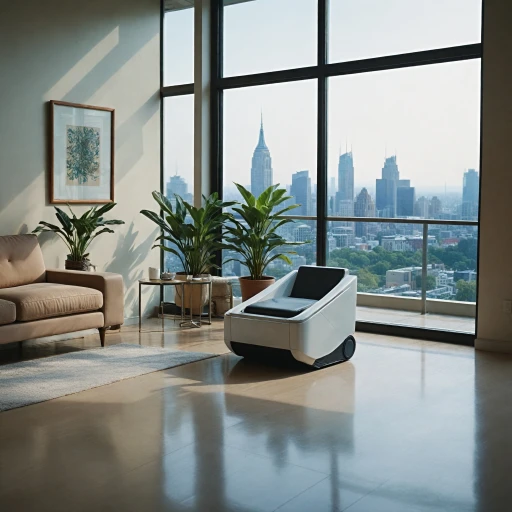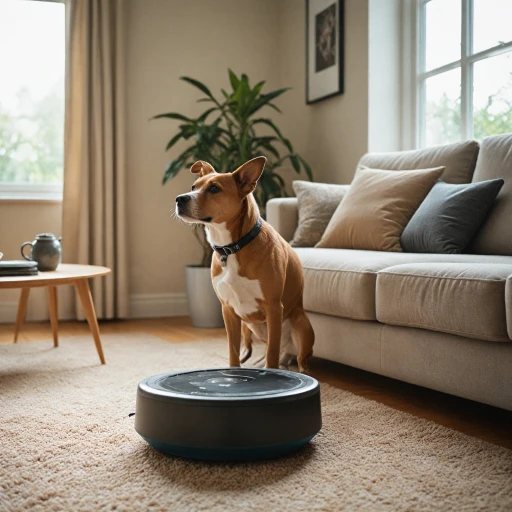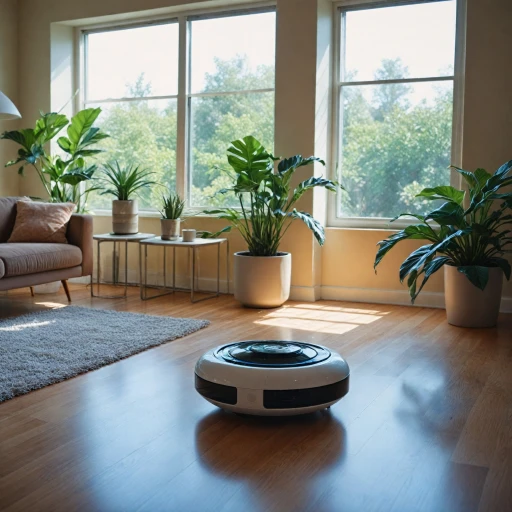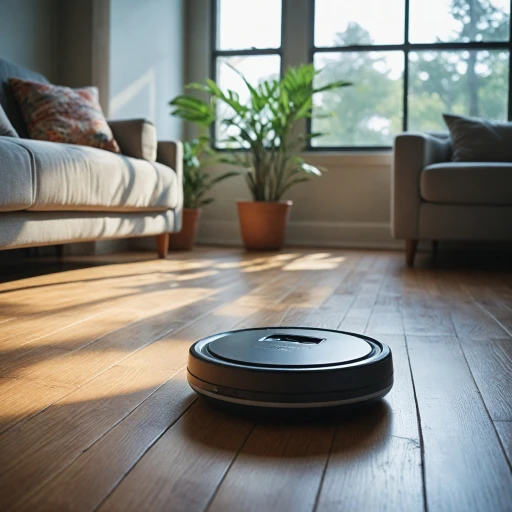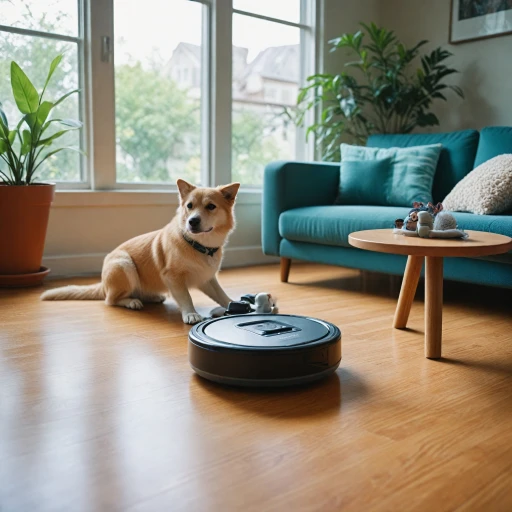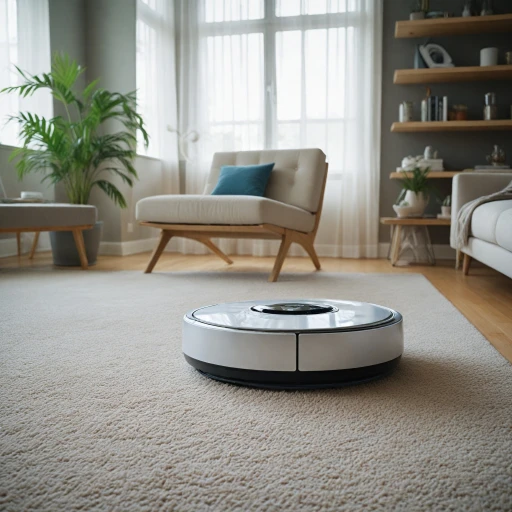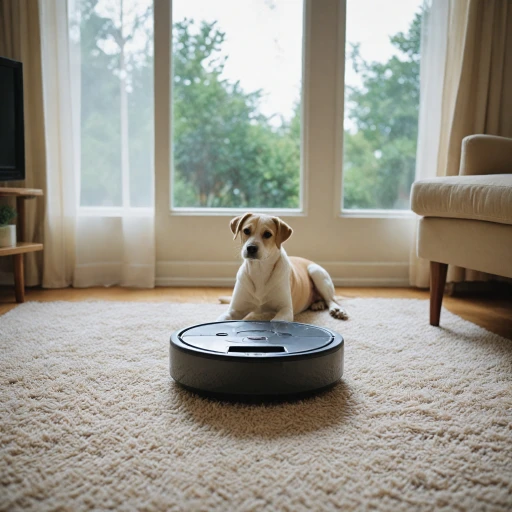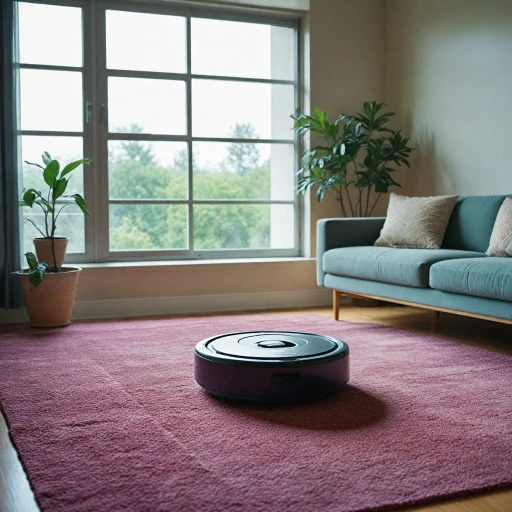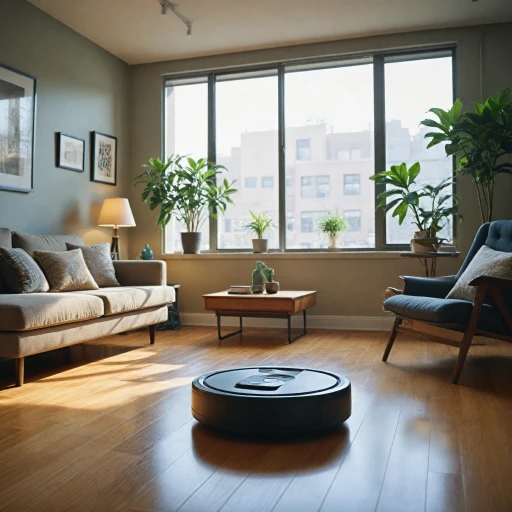
Understanding Robot Vacuum Technology
Deciphering the Technology Behind Robot Vacuums
In recent years, the adoption of robot vacuums has significantly increased, thanks to advancements in technology that allow these machines to clean efficiently and autonomously. Understanding the technology behind these devices is essential for anyone looking to invest in a robot vacuum.
Robot vacuums, like the renowned Roomba Combo or the innovative Roborock Qrevo, employ a variety of technologies to tackle cleaning tasks. Most models come equipped with advanced navigation systems, such as laser or camera-based navigation, ensuring they map your home and clean it methodically. Some models, like the Deebot Pro, even offer multi-level mapping capabilities, making them ideal for complex layouts.
Moreover, the rise of obstacle avoidance technology means that today’s models can detect and navigate around furniture or unexpected objects. This allows them to provide a more thorough and uninterrupted cleaning cycle. As you explore more about these technologies, you'll notice options ranging from basic models to pro versions with additional features.
A crucial feature is suction power. Models like the Roborock Pro Omni offer impressive suction capabilities, efficiently tackling dust, debris, and pet hair on various surfaces. Some even come with a vacuum mop combo, handling wet and dry cleaning tasks.
Another exciting technology found in some of the best robot vacuums is the auto-emptying feature. This feature helps maintain cleanliness by automatically discarding dirt from the vacuum into a designated repository, reducing the frequency of manual emptying.
Battery life is another key consideration. With improvements over the years, many robot vacuums now offer extended battery life, allowing them to cover more ground before needing a recharge.
Interested in exploring further? Delve into the world of automatic vacuum cleaners to find out more about how these robotic assistants are transforming home cleaning routines.
Key Features to Consider
Essential Features for the Modern User
When navigating the diverse landscape of robot vacuums, identifying the key features to prioritize can be daunting. Here we outline pivotal elements to focus on to ensure you make an informed purchase:
- Suction Power: Look for models with high suction power to effectively tackle dirt and debris, especially in homes with pets.
- Navigation Technology: Advanced navigation systems like object avoidance can prevent your robot from getting stuck or missing spots.
- Mopping Functionality: Some robots offer a vacuum mop combo, enabling them to both vacuum and mop, providing a more comprehensive clean.
- Battery Life: Consider robots with long battery life, allowing them to clean larger areas without needing frequent recharges.
- Auto Empty Systems: High-end models feature auto-empty functions, which can significantly reduce maintenance by collecting debris in a dock station automatically.
- Multi-Level Mapping: Multi-level capabilities are crucial for homes with more than one floor, allowing the vacuum to remember different floor plans.
- Pet Hair Cleaning: For pet owners, efficient cleaning of pet hair is essential, so options with specialized brushes can be vital.
Some popular examples include the Roborock and Deebot Pro series, renowned for their innovative technologies in suction power and navigation. For those in search of reliability and efficiency, brands like Roomba offer intriguing solutions with their combo models, ensuring optimal cleaning performance.
Evaluating these elements can steer your decision towards the best product that aligns with your cleaning demands. Understanding the right balance between these features is key to unlocking the potential of modern robot vacuums.
Comparing Popular Models
Exploring Top Models: Comparison and Features
When diving into the world of robot vacuums, understanding the key distinctions between popular models is paramount in making an informed choice. Each model boasts unique features, engineering prowess, and capabilities tailored to different cleaning needs, such as whether you have pets, multiple floors, or need a vacuum that intelligently navigates obstacles.
Considering features like suction power, auto-empty capabilities, and advanced navigation, it's essential to weigh how each vacuum addresses specific preferences.
- Robot Vacuum Pro Omni: Known for its power and multi-level cleaning efficiency, this model excels in suction, making it ideal for homes with pets. Its auto-empty feature simplifies maintenance, while obstacle avoidance technology minimizes manual intervention.
- Roborock Qrevo: Featuring a robust vacuum and mop combo, the Qrevo is perfect for those who want a dual-action cleaner. It combines powerful suction with an effective mopping system, ensuring no spot is left behind, even managing dried spills adeptly.
- iRobot Roomba Combo: Using advanced mapping forms part of its standout feature set, this model shines in pet hair collection with its specialized brushes pairing with the main vacuum. It's designed with a focus on maintaining battery life, suitable for larger spaces.
- Ecovacs Deebot Pro: Providing formidable cleaning performance with its powerful max suction settings, this vacuum efficiently tackles various surfaces. Its mopping and drying technologies complement each other well, offering comprehensive home cleaning.
These models are often highlighted on platforms like robot vacuum guru for carpet cleaning guidance, offering insights into how these vacuums fare on different flooring types.
Choosing the best robot vacuum requires taking a meticulous approach in assessing your home's cleaning requirements. From side brush designs tailored for edge cleaning to customizable vacuums for pet owners, understanding which features align with your lifestyle is key to optimizing your investment.
Maintenance and Troubleshooting Tips
Ensuring Longevity and Optimal Performance
Maintaining your robot vacuum is crucial for its longevity and optimal performance. Regular cleaning and troubleshooting can prevent common issues, ensuring your robotic helper is always ready to tackle cleaning tasks. Here's how you can keep your robot vacuum in top-notch condition:
- Empty the Dustbin Regularly: For peak suction power, empty the dustbin frequently. Most models, including the roborock series and the deebot pro, have easy access to the dustbin for quick disposal.
- Check the Brushes and Filters: Vacuum mop models like the roomba combo come with side brushes that can accumulate hair and debris. Regularly clean them to prevent clogs. Filters should be replaced as per the manufacturer's recommendation to ensure clean air output.
- Address Battery Life Concerns: Battery life can affect how effectively your robot vacuum cleans larger spaces or multiple levels. Ensure your vacuum is fully charged before use and consider battery replacements when performance dips.
- Navigation System Performance: Advanced models employ obstacle avoidance and navigation technologies. If your vacuum struggles with navigation, check for software updates or recalibrate the system as instructed in the user manual.
- Resolve Mopping Issues: For vacuums with mopping capabilities, like the vacuum mop roborock qrevo, make sure to regularly check the water tank and mop functionality. Ensure the mop dries properly post-cleaning to prevent mildew.
- Troubleshoot Common Problems: If the vacuum seems to be off-track or not cleaning thoroughly, review troubleshooting guides provided by the manufacturer or seek assistance from customer service.
By incorporating these maintenance habits into your routine, you’ll enhance the performance and extend the life of your robot vacuum. Whether it's dealing with pet hair or navigating multi-floor homes, a well-maintained vacuum cleaner proves to be a reliable cleaning companion.
Environmental Impact and Sustainability
Impact of Robot Vacuums on the Environment
While robot vacuums offer unparalleled convenience in keeping your home clean, their environmental impact is a consideration for eco-conscious consumers. The materials used in the production of these devices, as well as their energy consumption during operation, are two primary factors.- Materials and Recycling: Most robot vacuums are made using plastic and metal components, which can contribute to environmental waste if not properly disposed of. It's essential to consider models that use recyclable materials or companies that offer take-back programs to minimize waste.
- Energy Efficiency: Today's robot vacuums, like the roborock or the deebot pro, are designed to be energy efficient. Opt for models that minimize energy consumption without compromising on suction power and navigation capabilities. Understanding the battery life and the efficiency of the auto-empty features can also help in making an eco-friendlier choice.
Sustainable Cleaning Solutions
- Water Usage for Mopping: Many robots come with mopping functionalities that require water. Technologies such as "dries mop" functions ensure that minimal water is used, reducing waste while still effectively cleaning floors.
- Pet Hair Management: If you own pets, find more on how robotic vacuums handle pet hair efficiently, which can reduce reliance on chemical cleaners that might harm the environment (automatic vacuum cleaners for dog hair).
Future Trends in Robot Vacuum Technology
Innovations Shaping the Future of Robot Vacuums
The world of robot vacuums is rapidly evolving, with new technologies and features being introduced to enhance cleaning efficiency and user convenience. As we look to the future, several trends are emerging that promise to redefine how we perceive these automated cleaning devices.
Advanced Navigation and Obstacle Avoidance
Navigation technology is at the forefront of robot vacuum innovation. Future models are expected to feature even more sophisticated obstacle avoidance systems, allowing them to navigate complex environments with ease. This includes better handling of multi-level homes and improved detection of small objects, ensuring a thorough clean without getting stuck.
Enhanced Suction Power and Cleaning Efficiency
Manufacturers are continually working to improve the suction power of robot vacuums. The goal is to provide a deep clean that rivals traditional vacuum cleaners. Innovations in motor technology and battery life are key to achieving this, allowing vacuums to operate longer and more effectively on a single charge.
Integration of Mopping and Drying Functions
The integration of mopping and drying functions is becoming more common, with models like the Roborock and Deebot Pro leading the way. These vacuums can seamlessly transition from vacuuming to mopping, offering a comprehensive cleaning solution. The ability to dry the mop automatically after use is another feature that enhances convenience and efficiency.
Smart Home Connectivity and Automation
As smart home technology advances, robot vacuums are becoming more integrated into the ecosystem. Features like voice control, app connectivity, and automation through platforms like Amazon Alexa and Google Assistant are becoming standard. This allows users to schedule cleaning sessions, monitor progress, and receive maintenance alerts from anywhere.
Eco-Friendly Designs and Sustainability
With increasing awareness of environmental impact, manufacturers are focusing on creating eco-friendly robot vacuums. This includes using sustainable materials and designing energy-efficient models. The trend towards auto-empty systems also reduces waste, as users can dispose of dust and debris less frequently.
As these trends continue to develop, robot vacuums are set to become even more indispensable in our daily lives, offering unparalleled convenience and cleaning performance.
